The Amazfit PowerBuds is yet another attempt by Huami to bring a unique offering at an affordable price point - It aims to bring the learnings from its success with fitness trackers to the popular truly wireless earbuds space. The result is a pair of TWS that can do double duty.
The conundrum that most wireless earphones go through is trying to keep them small and compact yet create a shape and size that enhances fit quality. Amazfit’s maiden approach includes having removable ear hooks that take the fit and stability to the next level when needed, and become petite when not. To make the deal even sweeter for fitness enthusiasts, there’s also heart-rate tracking in the buds.
The ambitious design implementation is backed by great battery life, a sound signature tailored for the task and a sprinkling for smart features to keep you going. Needless to say, the Amazfit PowerBuds are pretty versatile without breaking the bank. But a deeper look suggests that not all ideas work as promised, and will thus act as the deciding factors between these and a regular pair of wireless buds.
For the uninitiated, Huami is a Xiaomi-backed company that has been responsible for the development of Mi Bands. It also boasts of a wide portfolio of affordable smartwatches and fitness trackers.
Amazfit PowerBuds price and availability
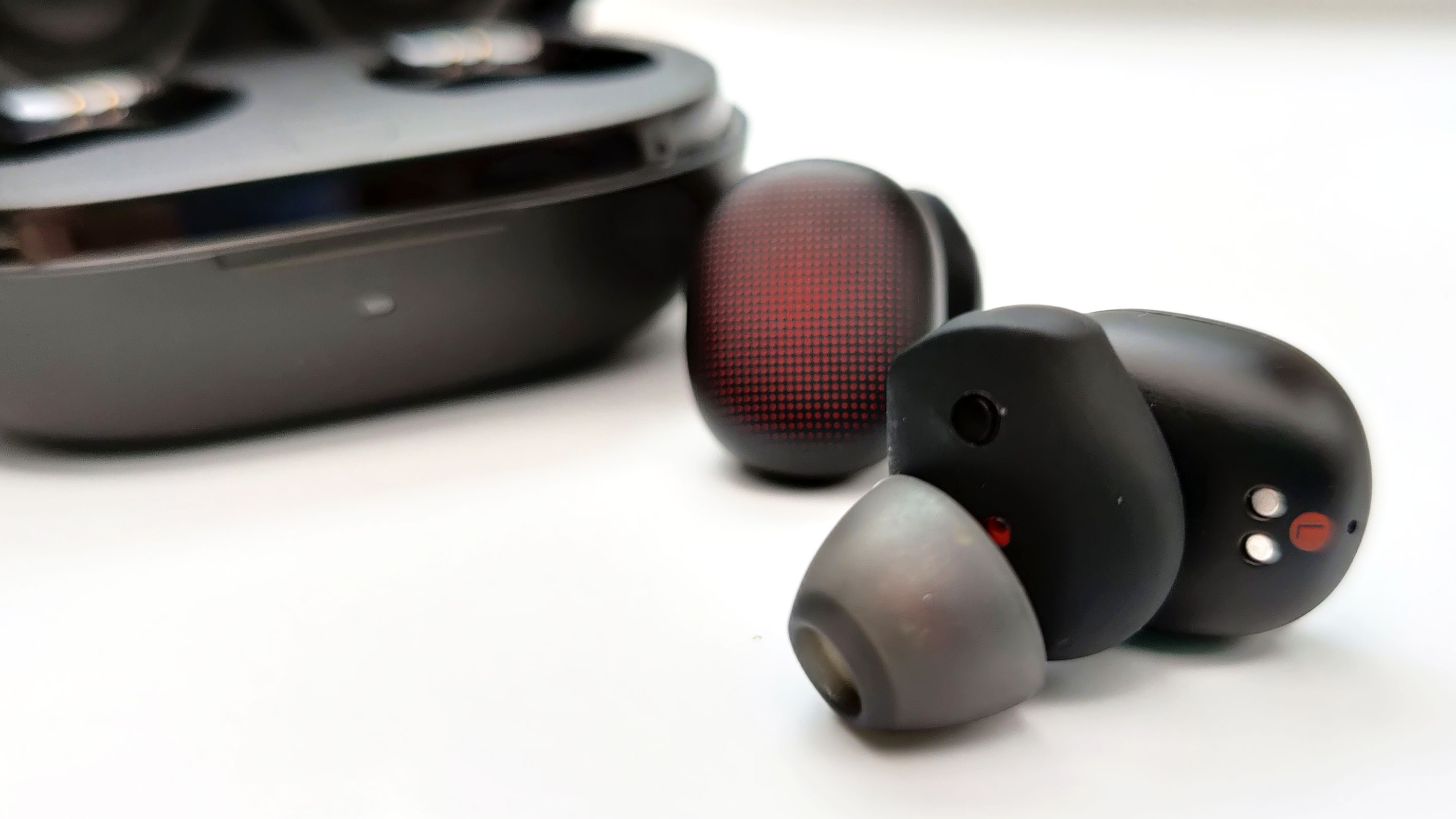
In India, the Amazfit PowerBuds TWS is priced at Rs 6,999. Colour options include black and red, white and red and white and yellow. Amazon is the sales partner. It can occasionally be found at lower prices too.
Check out the Huami Amazfit PowerBuds on Amazon.in
Design
- A bulky design even without the hooks
- IP55 dust and water resistance
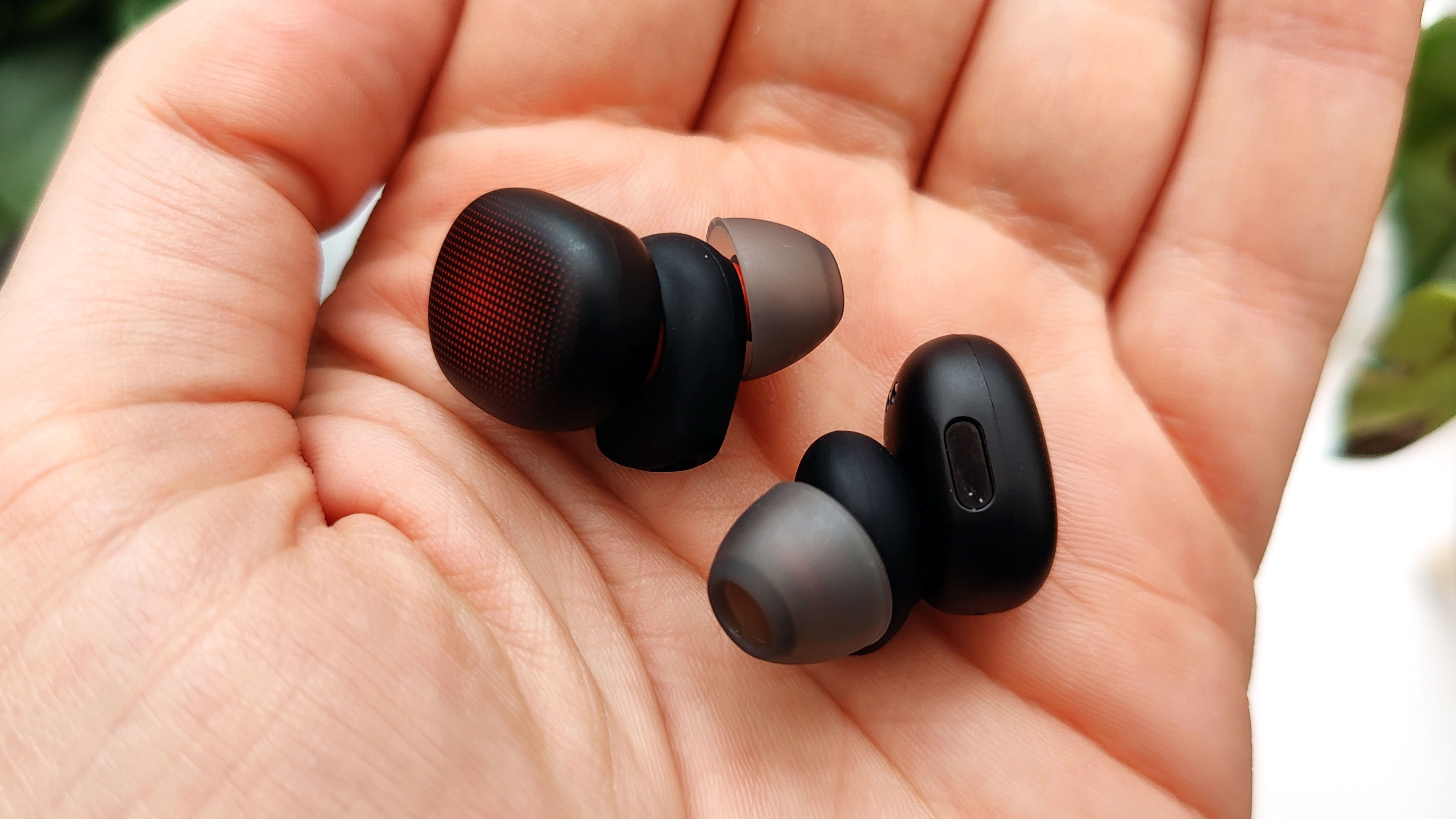
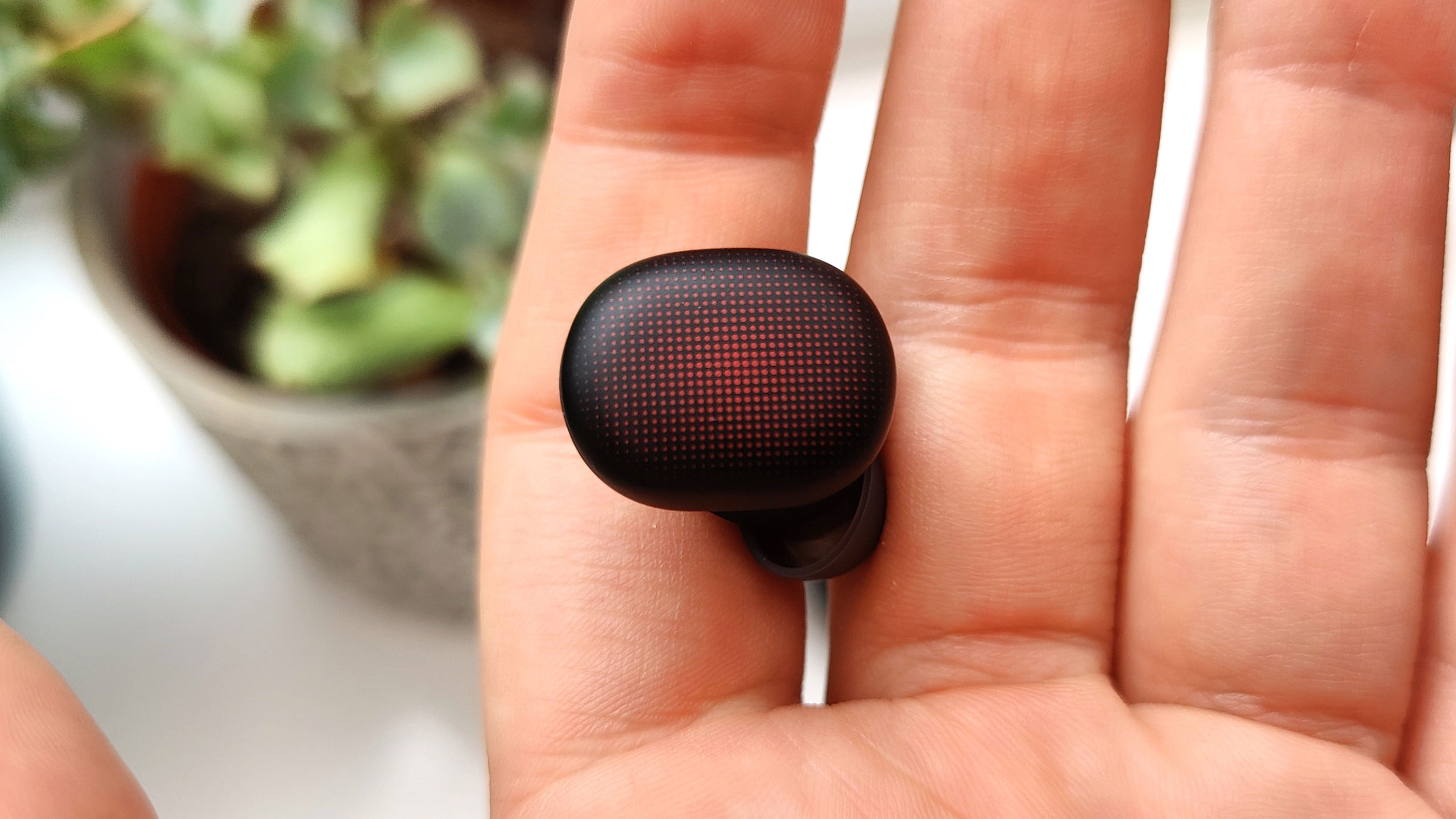
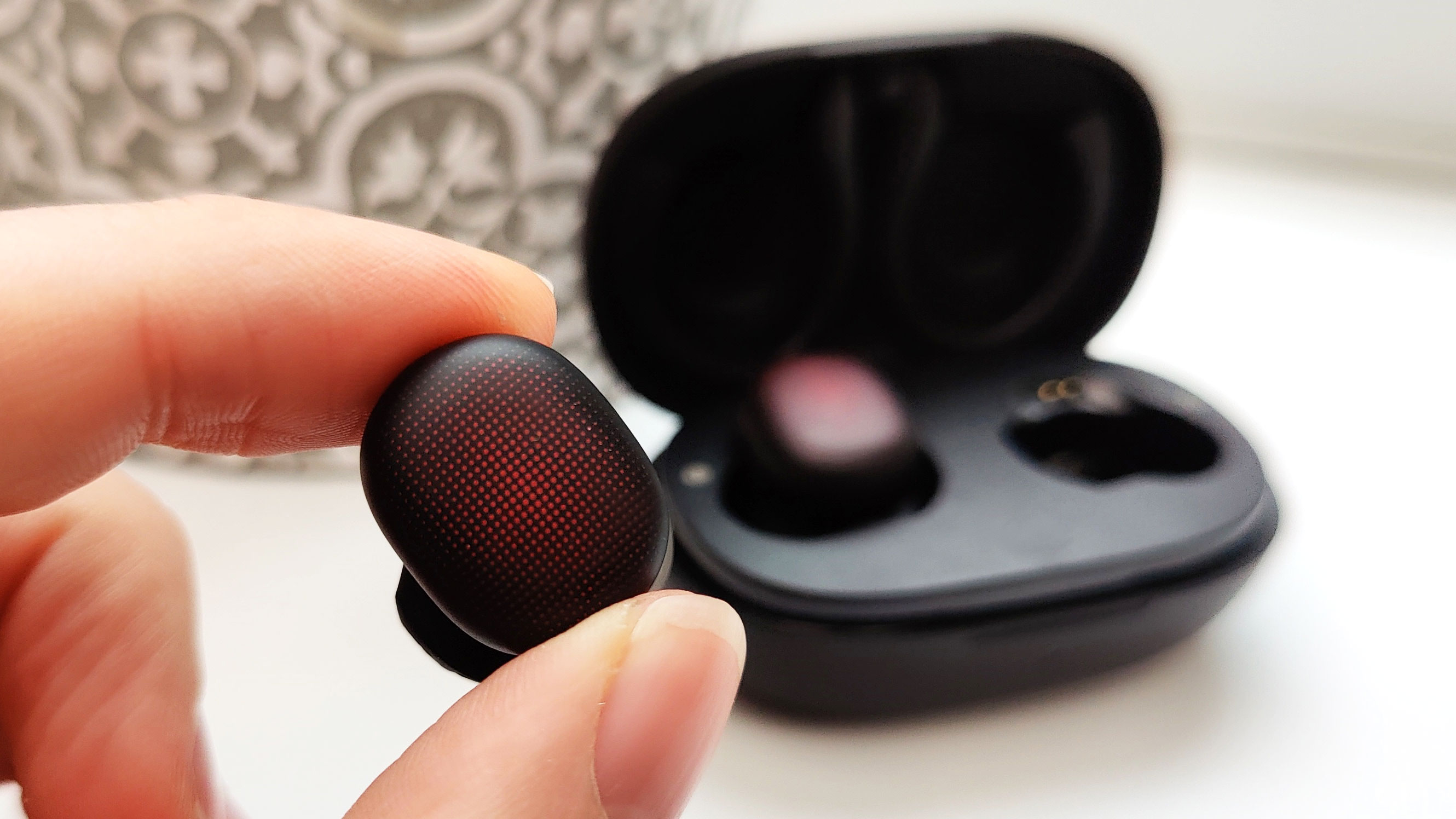
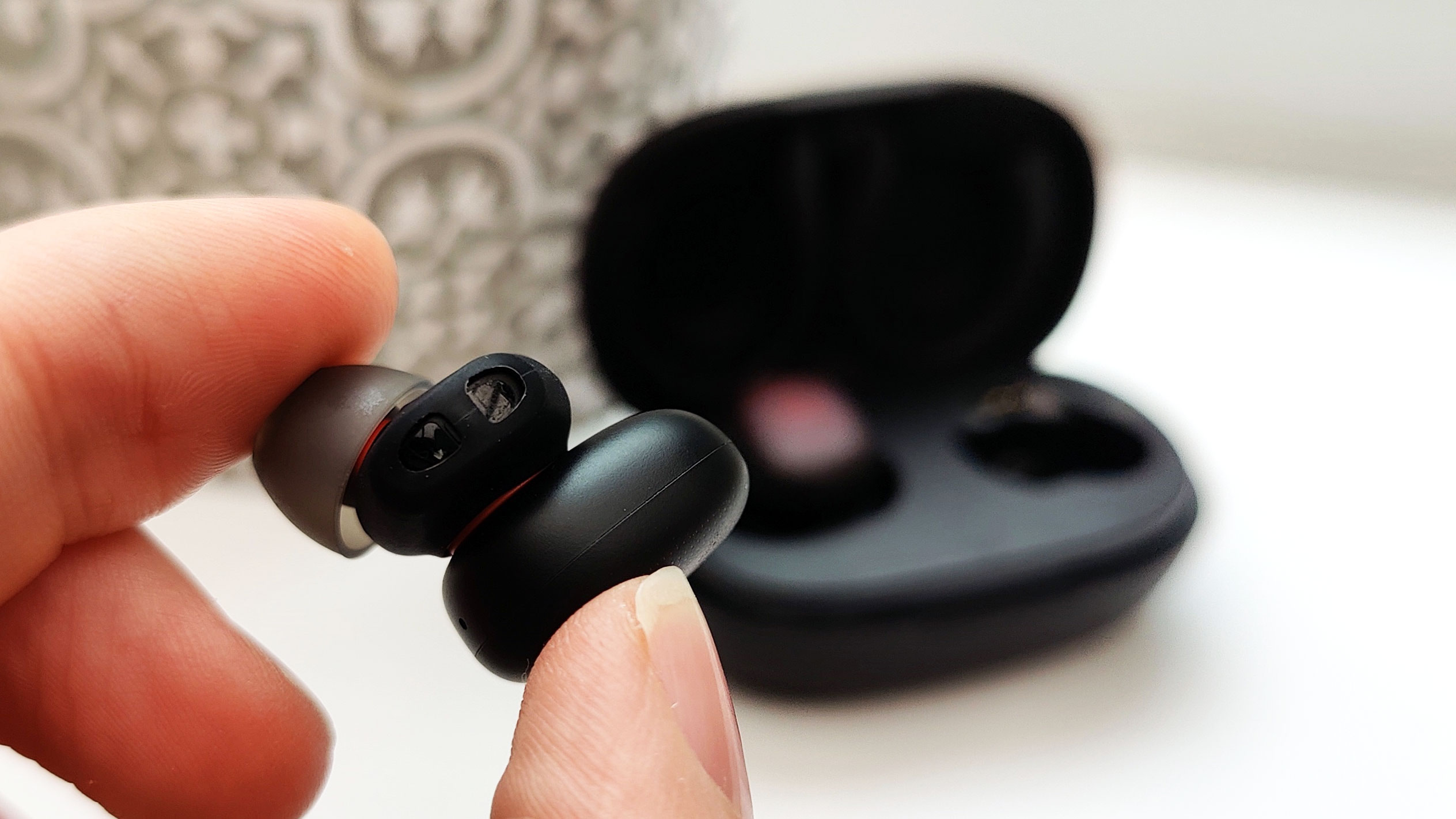
Right out of the case, the Amazfit PowerBuds might seem similar to other in-ear style earphones, but it won’t take you long to realise that there’s something more than the usual components. Most buds have a bigger outer part that sits in the ear pinnae and the actual tips that have to be inserted in the concha. However, these have a third section in the middle which adds a sideways protrusion that touches the floor of the ears - and houses the heart-rate sensor. Due to this, it becomes invariably larger on the Y-axis, leading to a fair bit of protrusion out of the ears.
But that extra section also helps in better locking the buds in place once twisted at the right angle. The best way to describe their design would be as if a smaller set of buds have been fused with a larger set, for a slightly awkward look. They’re also slightly side-heavy because of this, instead of on the inside. I'm afraid that the fit is not for everyone.
A bunch of silicone tips are included in the box to fine-tune the fit and noise isolation for a better fit. Each bud weighs in at 6g, which is similar to the AirPods (4g each) and Galaxy Buds Plus (6g each), while the charging case tips the scales at 57g. That's heavier than the rival Apple (38g) and Samsung (40g) products. The case isn’t particularly bigger, but it definitely feels denser.
Ears come in all shapes and sizes, and you may be have a pair into which earbuds don't sit too securely. This could be more of a problem for the Amazfit PowerBuds, as they're pitched as sports headphones and will, therefore, need to survive the forces associated with various workouts. But the PowerBuds stay a step ahead.
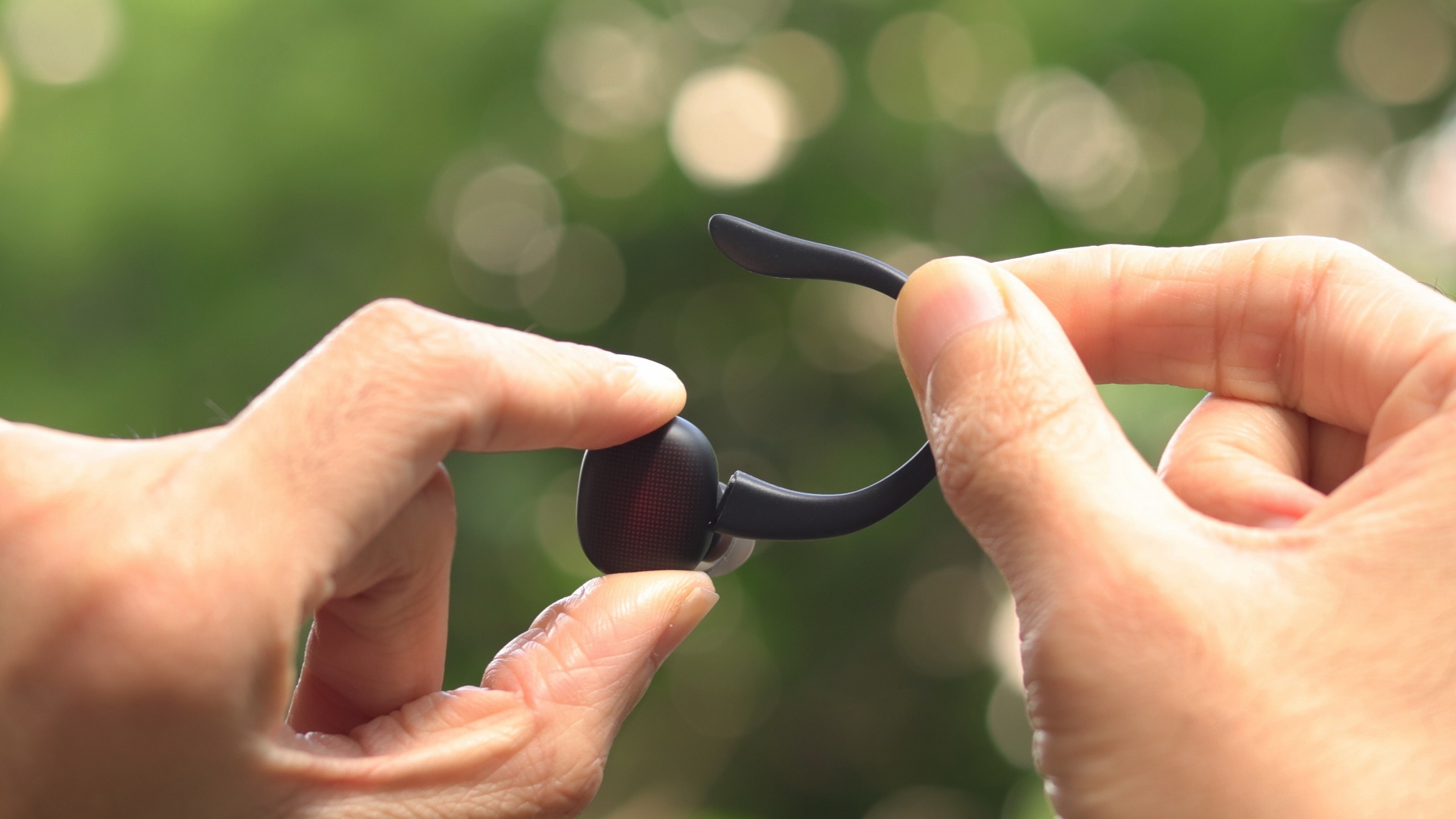
Tucked in the roof of the case are two ear hooks which attach magnetically to the body of the buds and become sports earphones of sorts. As whacky as this sounds, it works surprisingly well. They wrap around the outside of your ear and never lose hold of the buds or come off. In fact, they’re so simple to attach that you can attach them with the in your ear. No need to see them attach. In fact, it is all designed so well that I actually missed seeing the hooks in the case — Ingenious.
Some people might not need the hooks at all, but we fathom that a majority will. Moreover, if your ears are the kind that do not accept in-ear style buds easily, having the hooks attached can act as a nice secondary failsafe.
The Amazfit PowerBuds are IP55 rated, which means they're dust and water-resistant, ensuring they'll perform during the sweatiest of workouts and rainy runs. I dropped my buds in the sink on the very first day and they survived. The rating only applies to the earbuds themselves, however. You'll want to keep the charging case tucked away, as it doesn't carry the same protection. Plucking the buds out of the case was relatively easy, but putting them in was not. It almost always took me three tries to find the exact orientation.
The design on the outside looks rather cool too with a dotted pattern that reduces in density as it goes away from the centre. These are also the capacitive pads which you’ll use for gestures and controls.
Audio Performance
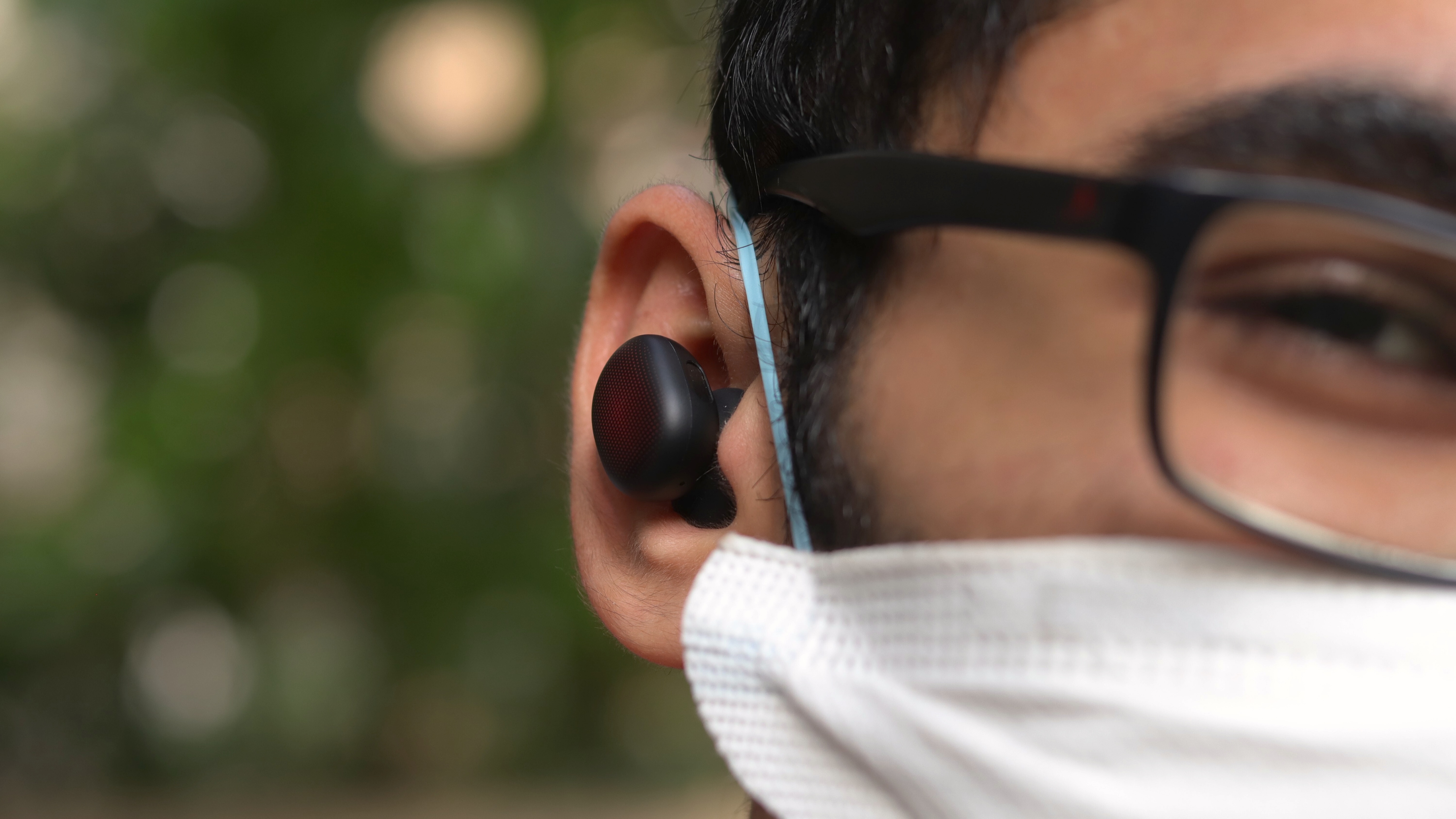
- Powerful bass is great for workouts
- Equalizer in app can help tailor sound to your preference
- No active noise cancellation or support for Hi-Res Audio
The Amazfit PowerBuds sound is delivered from 9mm drivers in each bud, with a more than the acceptable frequency range of 20Hz to 20,000Hz, meaning bass is rich and trebles clear.
The first thing that hit us when listening to music was the bass. It is both deep and powerful as it pumps into the ear canal, making for an absorbing experience.
If one were to be picky, the bass is slightly on the muddy side, but its impact is enough to get your head nodding and toe-tapping. When working out, this powerful bass performance comes handy and becomes particularly noticeable amid other external noises.
It's not just all about powerful bass performance, as the PowerBuds also deliver when it comes to more instrumental and vocal-heavy tracks. Different instruments and voices can be picked up, and while the sound isn't as clear as more premium offerings, it's more than acceptable considering the PowerBuds' price.
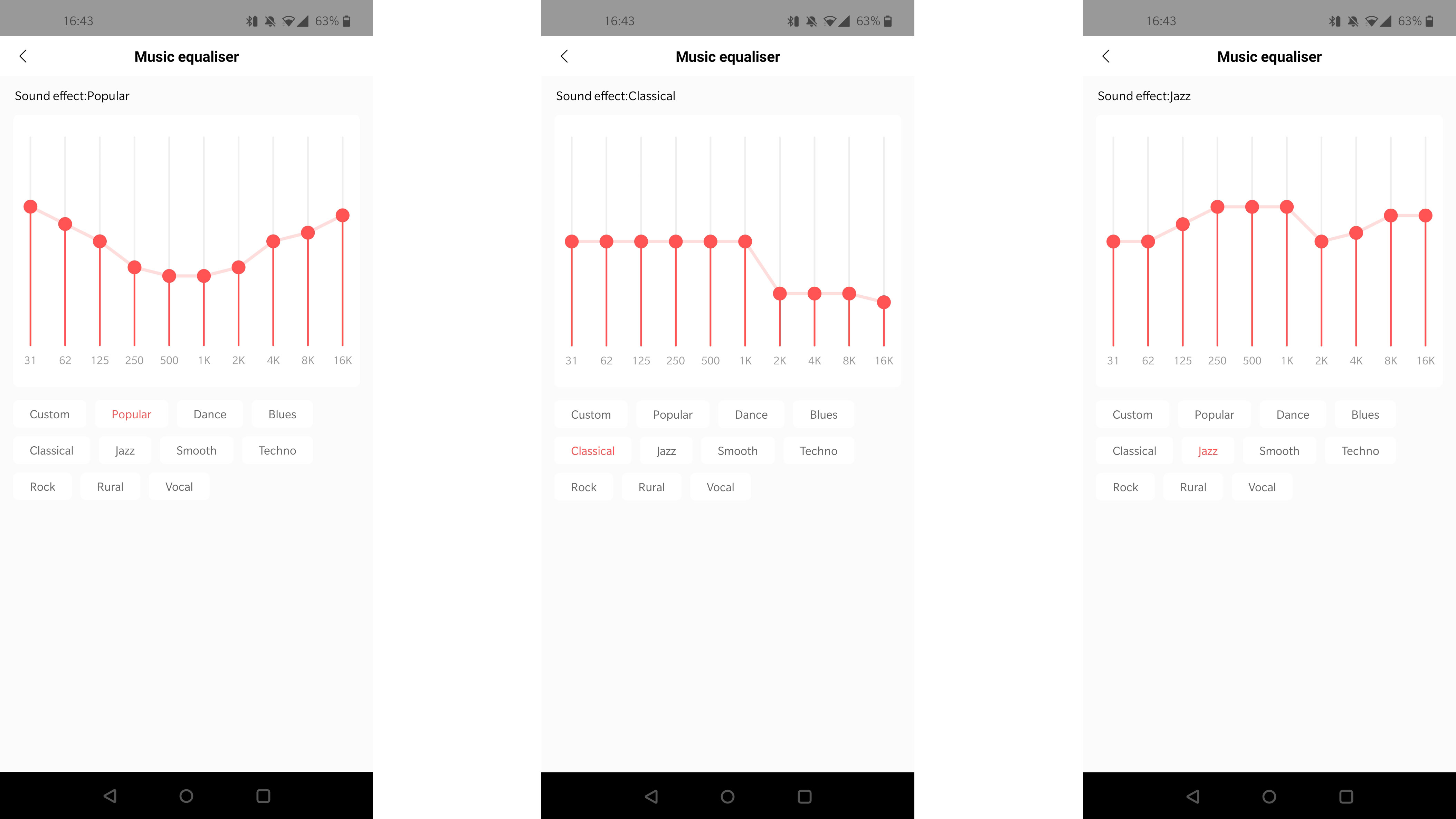
If you find the bass a little too overpowering, head into the Amazfit app and use the music equalizer to fine-tune the listening experience to your liking. By default, the PowerBuds are set to 'popular', which puts a large emphasis on bass - something which tends to be a preference during workouts - and changing to a preset such as 'classical' or 'jazz' will balance the sound better for those of you who want less focus on the low frequencies.
Overall, the audio performance of the PowerBuds keeps you engaged during extended listening sessions, which is exactly what you need for a fitness-centric set of buds - keeping you pumped up in the gym or when you’re out exercising. Not the most accurate but very enjoyable.
Their in-ear fit means the PowerBuds manage to block out some environmental noise from around (what we call passive noise-isolation), but they don't feature active noise cancellation of the more expensive products such as the Apple AirPods Pro. This isn't surprising, considering the low cost of the PowerBuds, but if you're in a busy city or riding on noisy public transport you can expect some bleed of the sounds around you.
Like the Airpods and Galaxy Buds Plus, the PowerBuds don't provide support for high-end audio codecs such as aptX, aptX Low Latency or LDAC. They only support SBC and AAC, which for casual listeners will be acceptable.
However, those with sharper hearing and a passion for Hi-Res Audio won't be served by the Amazift PowerBuds. If you fall into this category, you’re better off looking for something more specialized (and more expensive).
If you take one bud out, to have a conversation with someone else, for example, audio playback will automatically pause. It will resume when you pop the bud back into your ear, which makes for a seamless listening experience.
Battery life
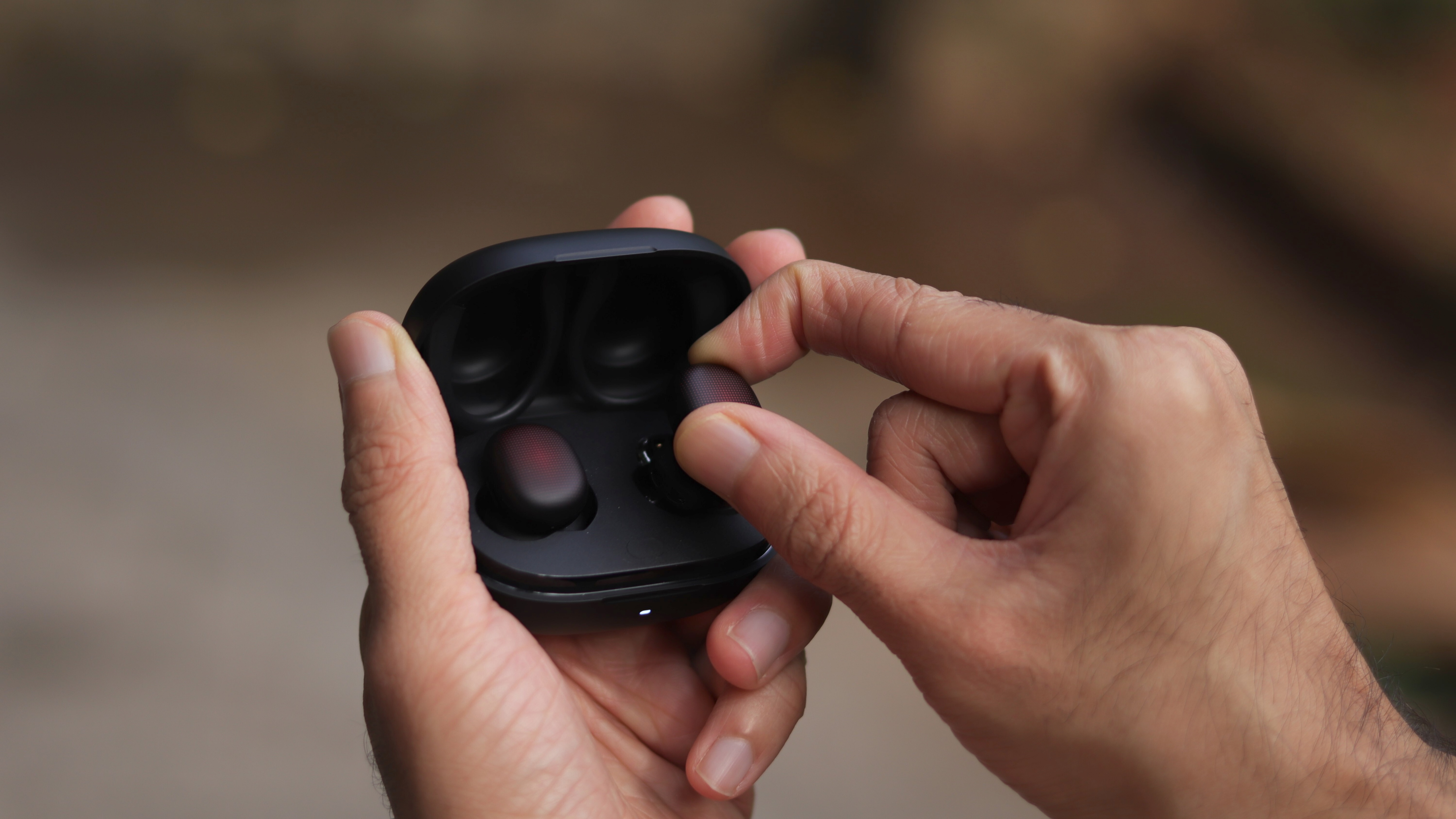
We found the Amazfit PowerBuds battery lasts the eight hours the company claims they will on a single charge. It allowed us to sit at our desk and get almost a full work-day of playback from the buds.
When the 55mAh batteries do run flat, you don't need to scramble for a cable, as the charging case has its own 450mAh battery which can supply an additional 16 hours of charge (enough for a further two full re-chargers for the buds). That means you can get up to 24 hours of audio playback from the PowerBuds before you need to return to a wall socket.
The battery life is above average for a pair of TWS in this segment. There would be times that I ended entire keynotes or meetings while the buds were still at 100%. It's also worth noting that if you increase the volume, and switch heart rate monitoring on during workouts, the battery will drain quicker - but the loss is not drastic.
Amazfit claims that a 15-minute charge is enough for three hours of playback (with heart rate monitoring off), and we found this to be pretty accurate during our testing, with a full charge taking around two hours. A USB Type-C cable is also included.
Connection
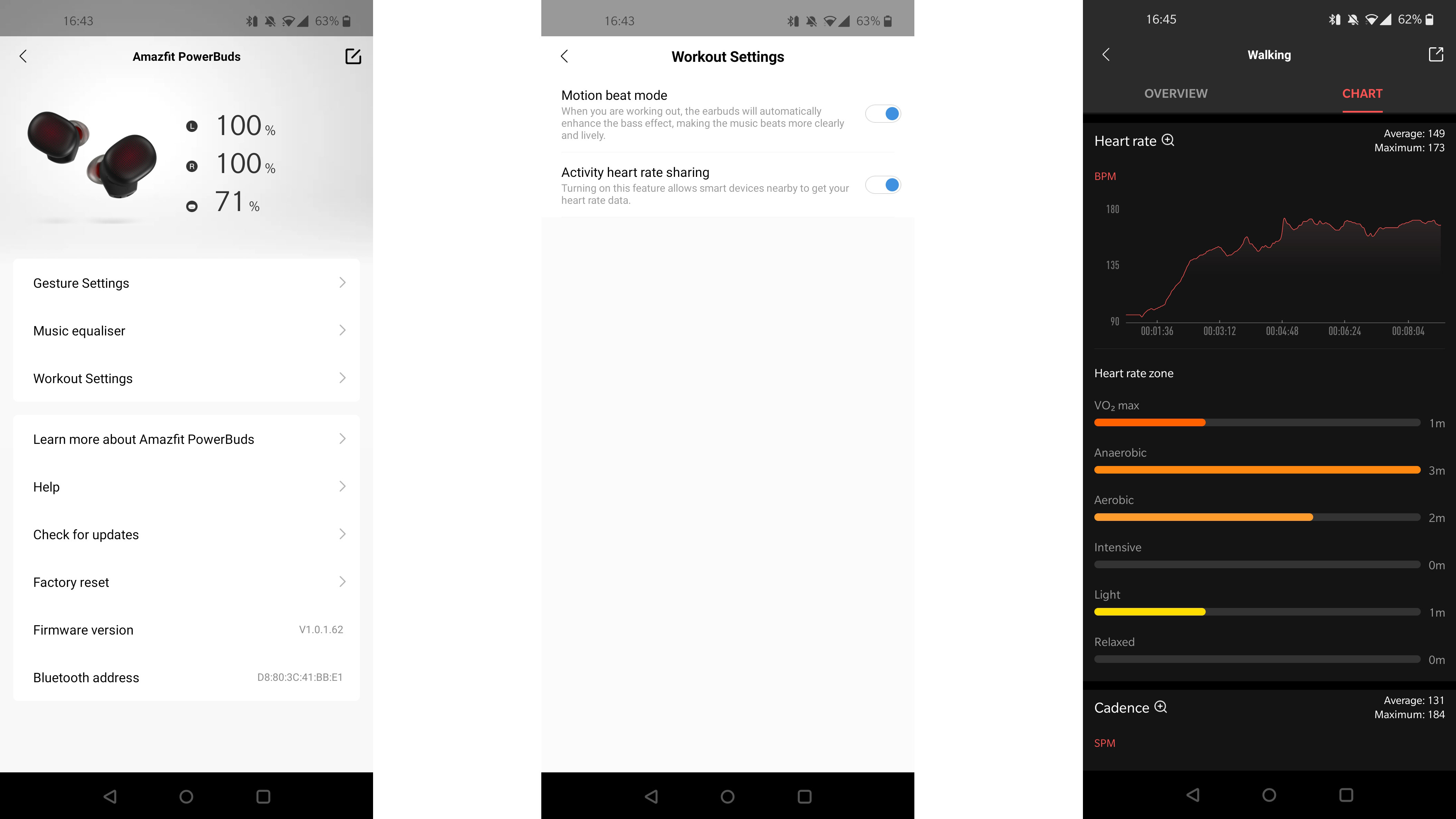
The Amazfit PowerBuds run over Bluetooth 5.0 and the connection was almost always pretty solid - even better than other earphones somehow. A couple of walls shouldn’t be an issue.
It's easy to connect the PowerBuds to your device, and you have two options. If you're looking for a quick connection, open up the Bluetooth settings on your device and start searching - then press and hold the button inside the Powerbuds' charging case until the light on the front starts pulsating. Wait a few seconds for your device to find them, and when the PowerBuds appear in the list tap to connect. You can now start listening to music, podcasts, audiobooks or anything else.
However, if you want to take full advantage of all the features included with the PowerBuds - including heart rate monitoring and equalizer setting - you'll need to download the Amazfit app. It's available on both Apple's App Store and the Google Play Store for phones running iOS 10 or above and Android 5.0 or above.
The app seems slightly half-baked and better designed for the smartwatches and not the buds.
From here you'll need to follow the on-screen instructions to select a new device to pair. Once paired you'll be able to access a variety of settings. You can set actions for double and triple taps on each bud, play with the music equalizer to get the right audio for you, and set activity controls such as heart rate monitoring.
- In-depth reviews: Amazfit T-Rex | Amazfit GTR | Amazfit Bip | Amazfit Verge
Features
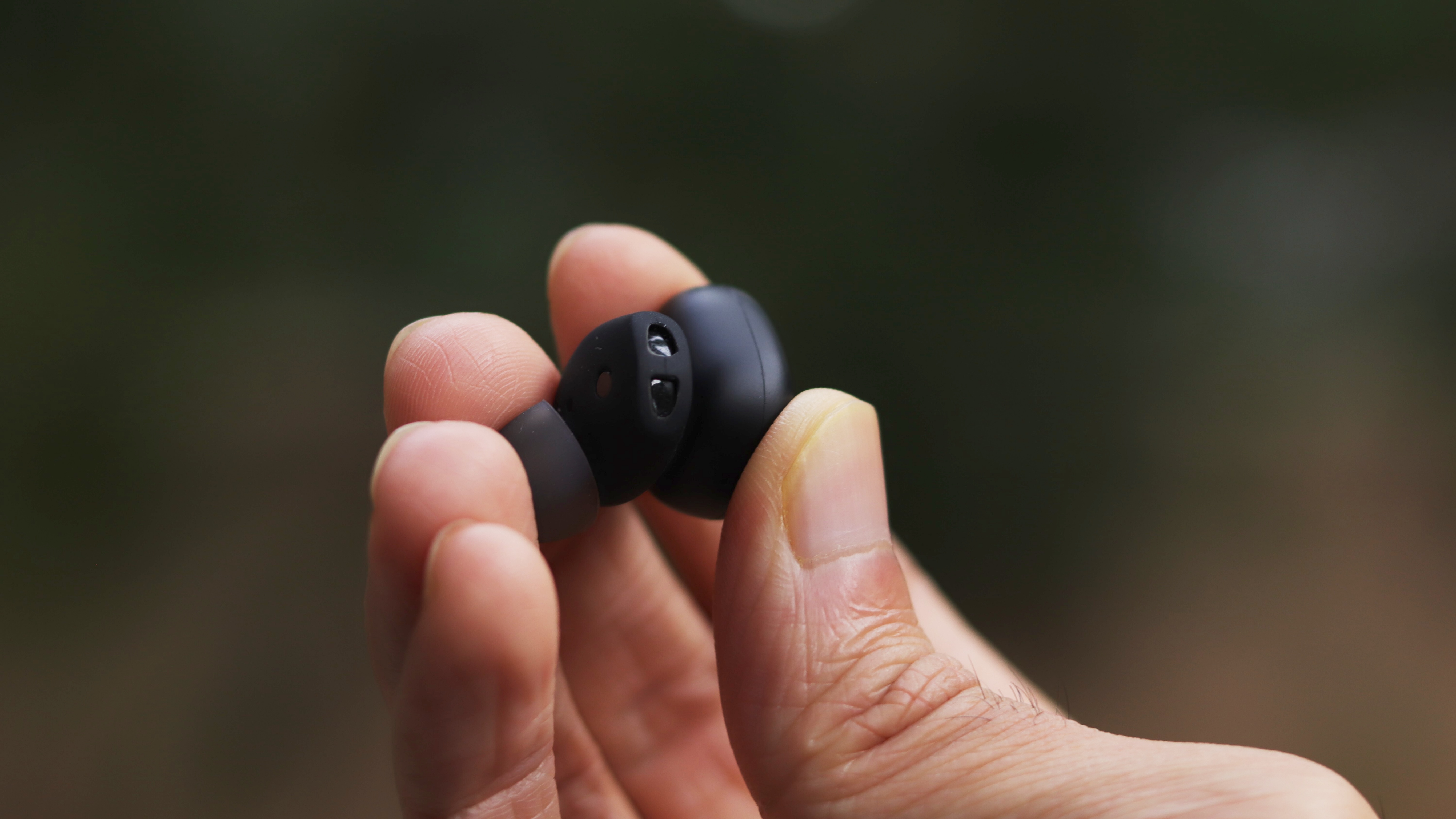
The Amazfit PowerBuds come equipped with PPG (photoplethysmography) sensors in each earbud, which use light-based technology to monitor blood flow and produce a heart rate reading. PPG sensors aren't as accurate as ECG (electrocardiography) sensors, which means the data produced by the PowerBuds should be looked at more widely to see the average change in rate.
The data is collected and displayed in the smartphone app, and if the PowerBuds detect your heart rate is becoming excessive, they'll play an alert to notify you it's time to cool down and potentially take a break from your current workout.
What we found frustrating was the fact we couldn't use the heart rate monitor unless we started a workout. It's not possible to use the PowerBuds to quickly check your resting heart rate, which feels like a missed opportunity considering the technology is right there, and the battery life is already pretty decent.
The application doubles as a fitness app. You're able to track your workouts, record core information such as your weight, sleep and water intake and it can give you information on your progress and key stats such as your BMI. However, using a real fitness tracker is the way to go if tracking is a higher priority.
You can also use the Powerbuds to wake your phone's voice assistant - depending on the gesture settings in the Amazfit app. You can choose which earbud to tap to wake the assistant, and whether you want to tap two or three times for the command to work.
We found the tap strength and frequency required to call up the assistant (or to use any other gesture control) was a bit of a hit-and-miss and sometimes had to repeat the gesture for the function to trigger.
When you do it get right, you'll hear the assistant's distinctive chime, which tells you it's listening and awaiting your command. We found there was a delay between the Powerbuds hearing our command and then pushing it to our device, but it wasn't a big issue, and we were able to use the assistant without too much fuss.
Call quality
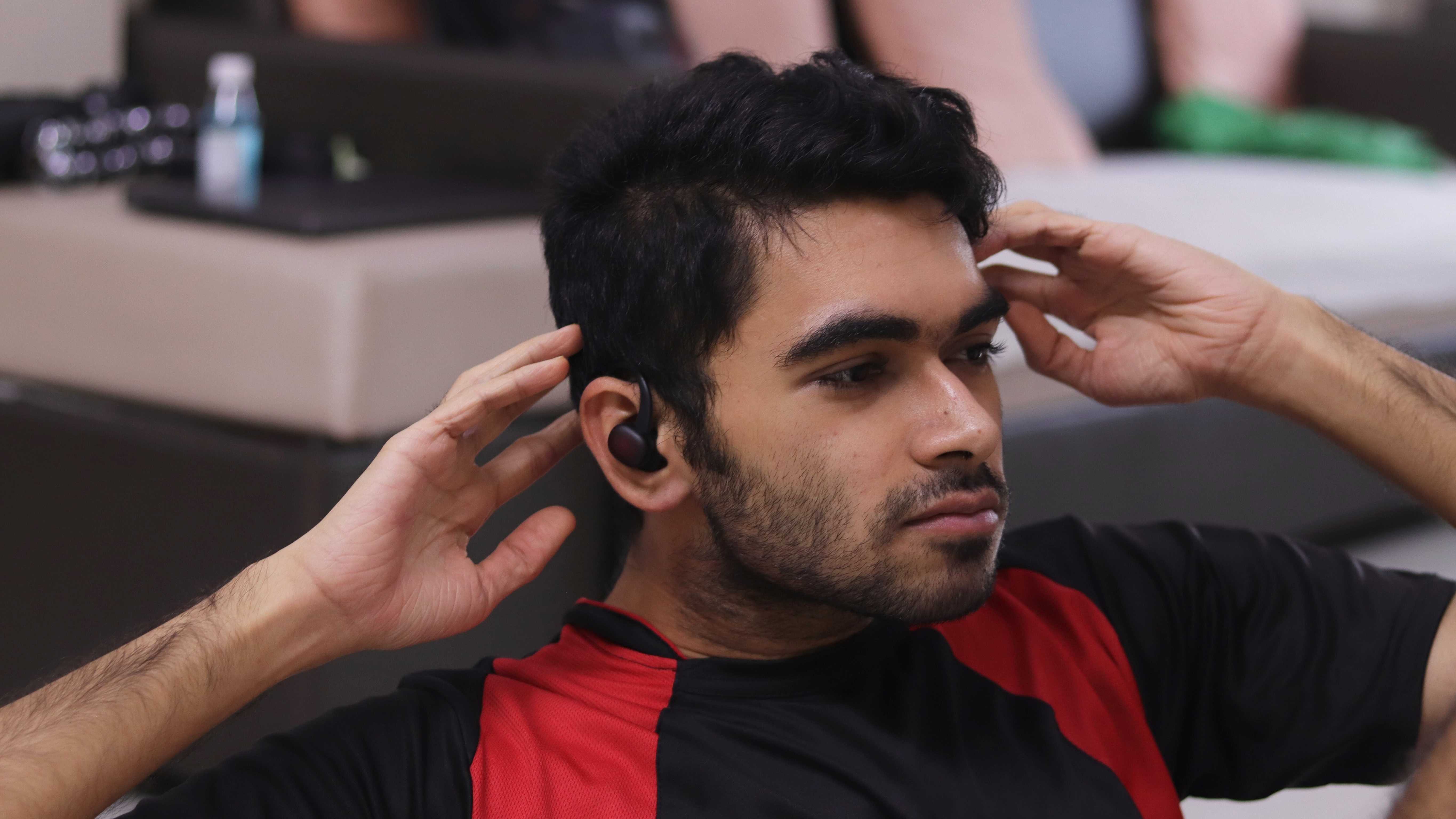
- Microphones with noise reduction work well for calls
- Recorded audio from the microphones is not as sharp
- You can interact with your phone’s smart assistant
The Amazfit PowerBuds can also be used for voice and video calls. We had no issues hearing the person on the other side, but they occasionally did. This is probably due to the distance and position of the primary microphone. The PowerBuds feature ENC dual-microphone noise reduction technology, which reduces the amount of ambient noise when you’re on calls, making your voice clearer to the person on the other end of the line. It does a fine job, but you might have to speak louder in louder environments.
Verdict
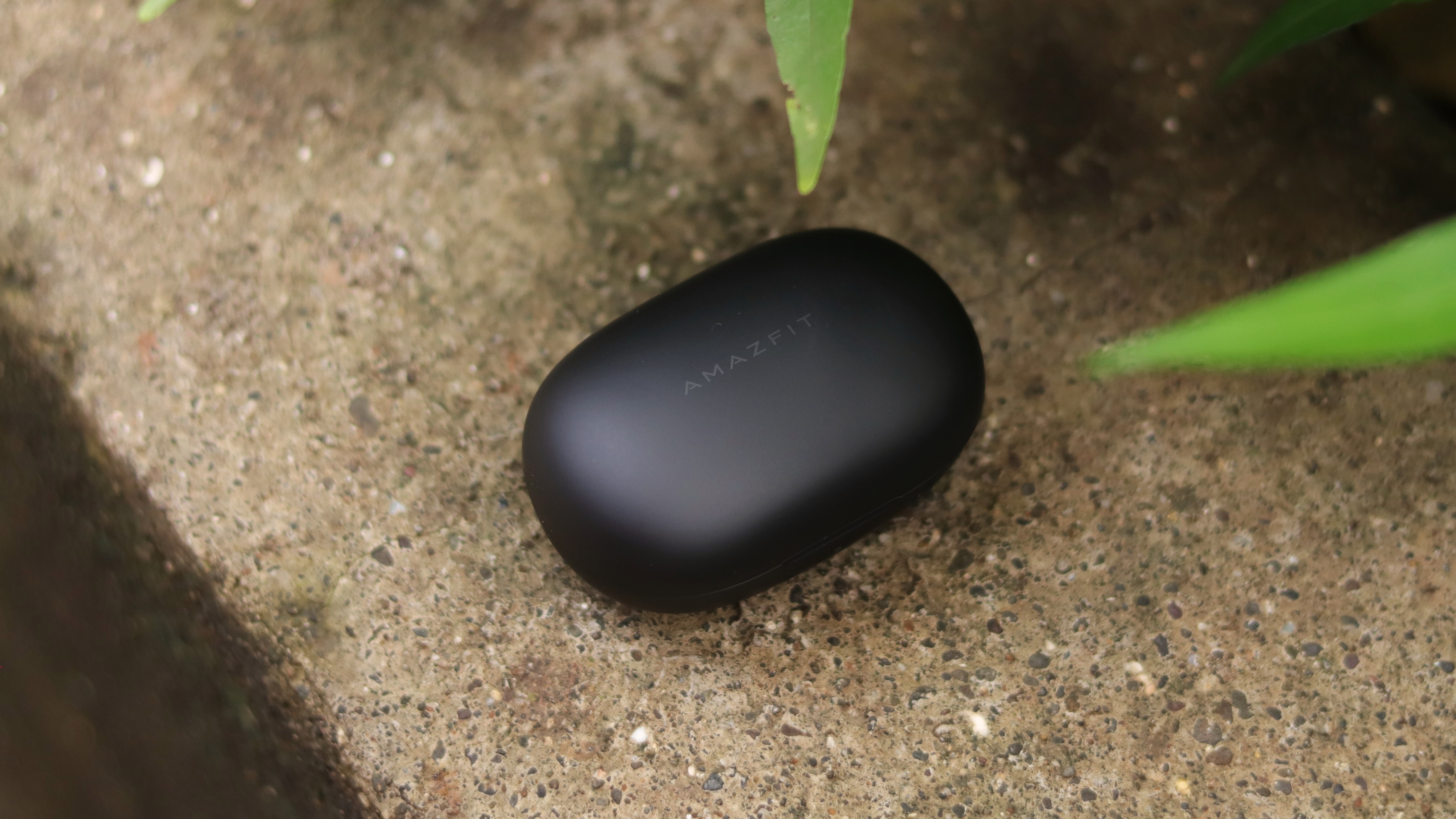
Truly wireless earbuds are one of the trendiest product categories of recent times. It comes as no surprise that more tech brands are trying their hand at this. Amazfit’s attempt might not score high on the usual parameters but brings unmatchable features and versatility, especially if you’re into fitness.
If you’re looking for a pair of buds that work great for fitness while staying minimal and tiny, prefer music with a bit of bass, and value features such as heart-rate tracking, then the Amazfit PowerBuds are an easy recommendation. The battery life is the icing on the cake.
However, if your preferences are primarily just a great audio and app experience, there are definitely other options in the market. The OnePlus Buds, Vivo TWS Neo and the Xiaomi Mi TWS 2 are some of the best buds you can get in this segment, and tuned for music via smartphones.
Check out the Huami Amazfit PowerBuds on Amazon.in
from TechRadar - All the latest technology news https://ift.tt/33CTo2T
via IFTTT
0 التعليقات: